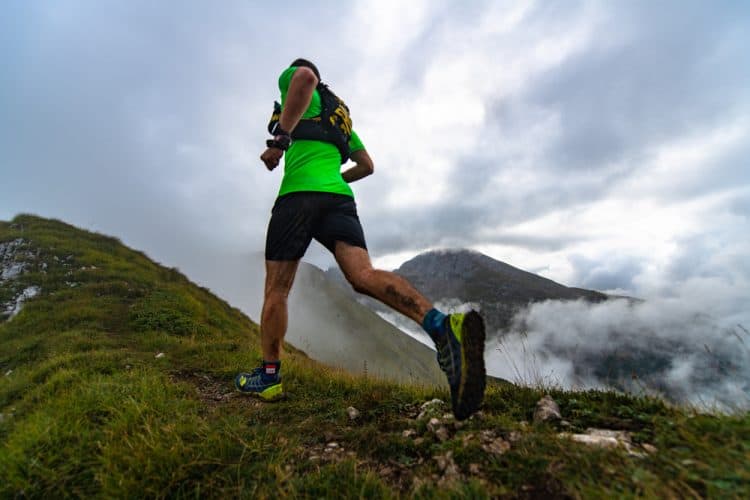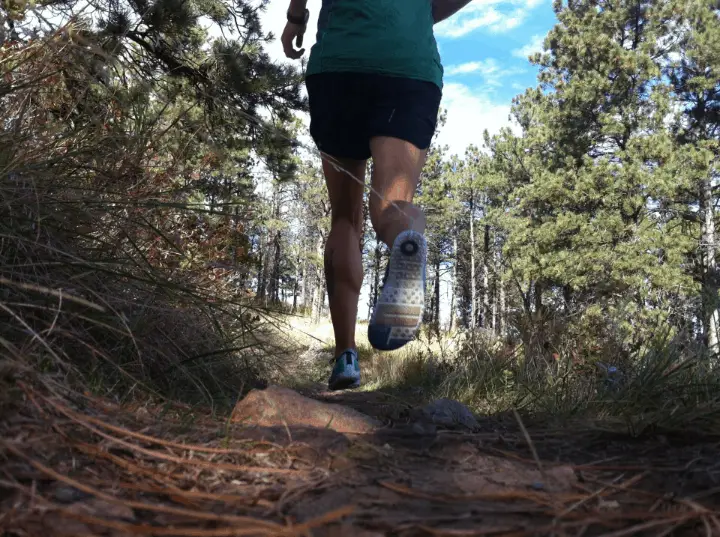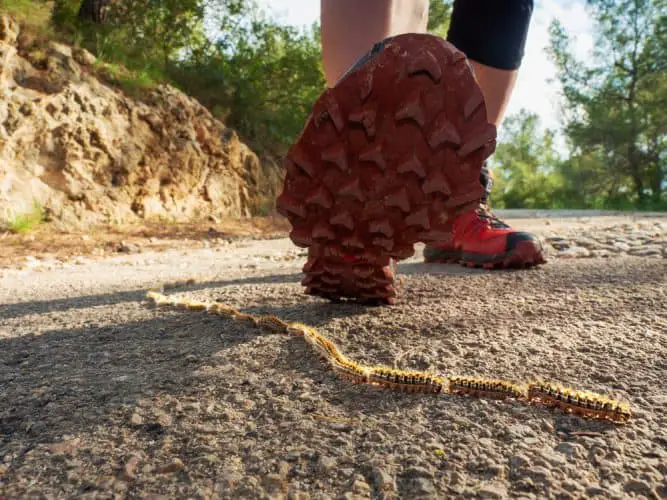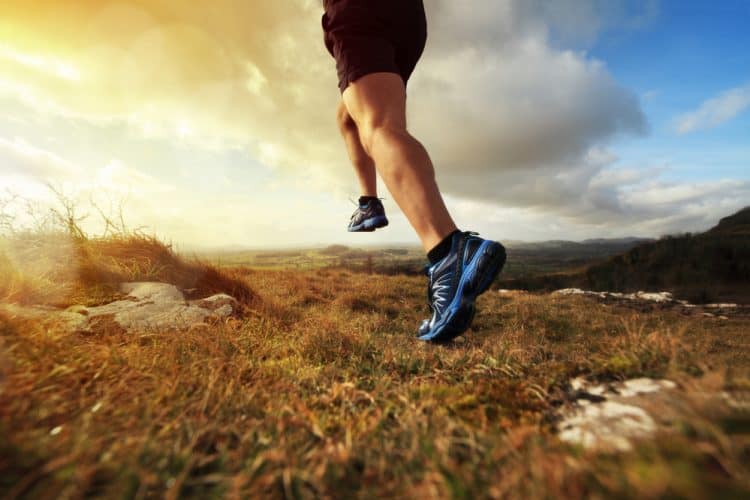Can Hiking Shoes Be Used For Running? (Yes, But Check This)
Multi-functional is the big trend these days, especially in shoes. This leads to people trying to figure out what they can use different shoes for.
Most people who own running shoes don’t run. They wear them as all-around sneakers that are light and cushioned. Good on pavement but not significant in the dirt due to lack of traction and support.
This is where hiking shoes come into play. More supportive than the average running shoe, the sole is lugged for traction on the trail.
You get a pair of hiking shoes; they will be suitable for hiking and do a good job for general around-town walking.
But can hiking shoes be used for running? The short answer is yes, hiking shoes can be used for running. The longer answer is – it depends. How long are you running? What kind of hiking shoes are you using? What terrain are you running on?
If you want to figure out if your hiking shoes are suitable for running, then read on and gain some insights into what makes a good hiking shoe and how that translates to running.
Let’s dive in.
Can you run in hiking shoes?
You can run in hiking shoes or just about any footwear. Look at the military. They run in combat boots with fully loaded packs. They have a high incidence of injuries, but they do it.
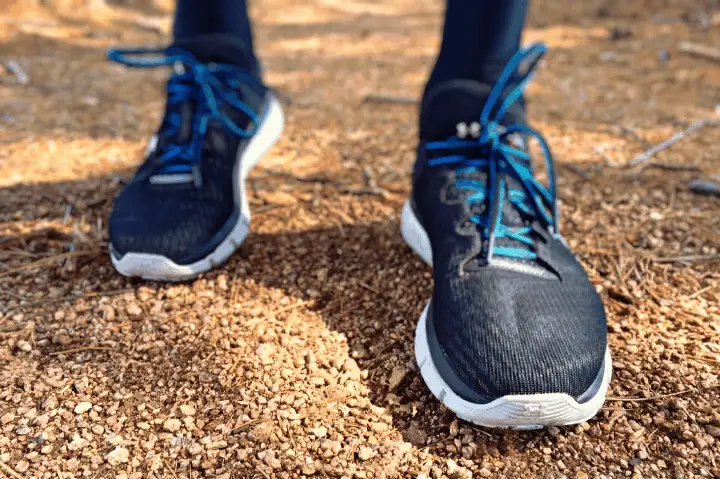
Typical trail running shoes.
The main common points are lugged treads for traction, and both are low-top. Think of hiking and trail running shoes as a spectrum, with the stiffest hiking shoe on one end and the lightest trail running shoe on the other.
Weight
Running shoes are lighter than hiking shoes. Since you lift your feet higher and faster when running, this saves you a lot of energy.
It also ends up being more comfortable on the shins, as the tibial muscles don't have to work as hard with a lighter shoe.
Aside from the performance benefit of more lightweight shoes is the joy of wearing them. Light shoes just feel bouncy and make you want to move.
Durability
The heavier weight of a hiking shoe increases its durability, as it can use more material in its construction.
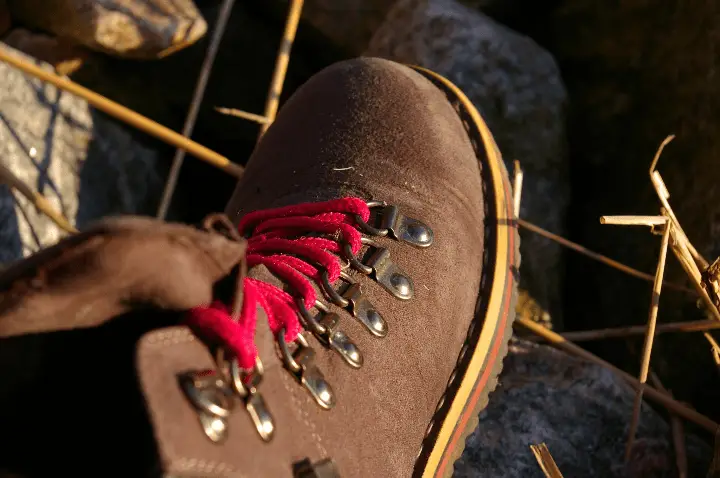
Typical hiking shoes.
This durability tends to manifest in the uppers and tread, where the extra fabric helps the shoes last longer.
Running shoes are not as durable.
Stiffness
To give your foot more support when hiking over rough terrain, hiking shoes will have a stiffer mid-sole.
This will protect the bottom of your feet from rocks and roots.
Trail running shoes may have a rock guard built in for protection, but they try to maintain forefoot flex, so your feet can move more naturally when running.
Water Resistance
Except for the ultra-running crowd, you will probably hike longer than you will run. With this in mind, hiking shoes tend to be more weather resistant than trail running shoes.
This can be in the form of a more water repellent upper or complete waterproofing with a membrane such as Gore-Tex.
Running shoes will have a mesh upper for breathability, which is cooler in hot weather and dries quickly.
What about approach shoes?
We've talked about hiking and trail running shoes, but a third style of off-road shoe is called the Approach shoe.
Take a look at the video below that explains useful details about approach shoes.
These are designed for the hikes into rock climbing areas with low-grade climbing or scrambling over rocks.
The sole is sticky rubber for grip on the rocks with smooth sections around the toes for maximum contact.
The lugs don't tend to be as aggressive as shoes designed for mud, as you won't usually head out rock climbing in the rain.
The profile is lower with a thinner midsole, but some models have a good amount of cushion.
The La Sportive TX series or Scarpa Mescalito is an excellent all-around approach shoe that would double as a running shoe for short to medium trail runs or similar sports.
When to wear hiking shoes
Here’s the straightforward answer:
- If you are only hiking
- You need support due to ankle or knee issues
- You want maximum durability
- Wet conditions when you want to keep your feet dry
When to wear trail running shoes
In the following cases, you will be better off wearing trail running shoes.
- You want to maximize your speed
- You are in an off-road race or event
- If you are running longer than 3 kilometers
- Your feet, ankles, and knees are strong
When to wear approach shoes
And here’s when to go with Approach shoes:
- It's dry out
- You are approaching rock climbs
- The hike has a lot of rock scrambling
- Your walk or run has some rock climbing involved
Can you hike in running shoes?
Remember that hiking is just walking on dirt, so, yes, you can wear running shoes to hike in.
As the terrain gets looser, rougher, or steeper, the amount of traction on the bottom of the running shoes will have to increase, but the shoe will handle it.
Many people opt to thru-hike trails like the Appalachian Trail with trail running shoes, as the lighter weight over millions of steps will save a lot of energy.
How to choose trail running shoes for hiking?
When looking for a trail running shoe for hiking, we need to change our criteria a little compared to running.
With running, you want a shoe that stays in place with the increased force of the foot strikes. While hiking, we want the shoe to remain in place but give more room in the toes and across the forefoot.
We will generally be hiking longer, so the shoes will need to handle the foot swelling for long days on the trail.
Below are the factors we look at when choosing a trail running shoe for hiking.
Traction
Whether for hiking or running, if you are on anything but smooth, trails, you will need traction lugs on the bottom of the shoes.
Deep lugs of 4-6 mm made of sticky rubber will help you stay sure-footed in both hard and soft conditions.
Fit
You will need to try on a bunch of shoes as shapes vary dramatically. You want a fit that is firm in the heel and roomy across the toes.
The rear of your foot held firmly will help minimize blisters. Lengthwise, you want enough clearance that your toes don't hit the end of the shoe when going downhill.
If you have a wide forefoot, look to getting models offered in wide or roomier designs like the Altra Lone Peak series.
Cushion
Whether running or hiking, you need adequate cushioning underfoot to reduce impacts and protect your feet from bruising.
Look for at least 10mm of cushion. Some models, such as the Hoka shoes, offer up to 35mm. The thicker the shoe's sole is, the taller you stand, which can make you less stable.
Support
Since trail running shoes tend to have a mesh upper that will offer little support, it will come down to a chassis molded into the midsole.
Underfoot support like this will help with torsional control and often helps protect from rock bruises through the shoe's bottom.
Recommended Trail Running Shoes for Hiking
If you’re convinced that you want trail running shoes for hiking, we got you covered with some kickass models.
Altra Lone Peak 5
The Lone Peak is one of the most popular shoes among thru-hikers. They are comfortable for long mileage days, have good traction, and are light compared to the average hiking shoe.
The upper can wear out pretty quickly in rough terrain, but I still tend to get about 400 miles out of a pair. They have a wide toe box, making them comfortable even when your feet swell.
La Sportiva Bushido
This is a rugged, grippy shoe that offers a lot of foot protection. They are great for rough terrain but fit on the narrow side, so they aren't for everyone.
If you have a narrower foot, then this could be the ideal shoe for you. The extra protection comes at the cost of breathability, so they aren't the best for hot conditions.
Salomon Speed Cross 5
The Speed Cross is the ultimate Tough Mudder shoe and makes a great hiking shoe due to its comfort and traction.
The sole is among the most aggressive, with widely spaced lugs at once, both great in mud and grippy on bare rock.
The toe box is wider than on previous versions, and they come in a wide model, so they fit a broad range of people.
Conclusion
We are living in a time of both ultra specialization and generalism. You can find the specific shoe for any conditions while finding shoes that were designed to be pretty good at everything.
If you feel like getting a bit of a run in the middle of a hike, don't hold back because you don't have the exact right shoe.
The same goes if you are out in your trail running shoes. Your footwear won't explode because you hiked rather than ran in them.
So, can you run in hiking shoes? Yes, absolutely.
In the end, it comes down to enjoying nature and not getting hurt. If running in your hiking shoes gives you shin splints, then stop, continue your hike. Get a pair of trail running shoes for your next excursion and try again.
Winston Endall
Having worked in the outdoor, fitness, and cycling industry his whole life, Winston brings a wealth of real world knowledge on the topics. Rock climbing, backpacking, cycling and wilderness survival are his life. As both an athlete, coach, and outdoor educator, his practical experience translates into his writing to help people better pursue their outdoor passions. Read more about Winston here.


